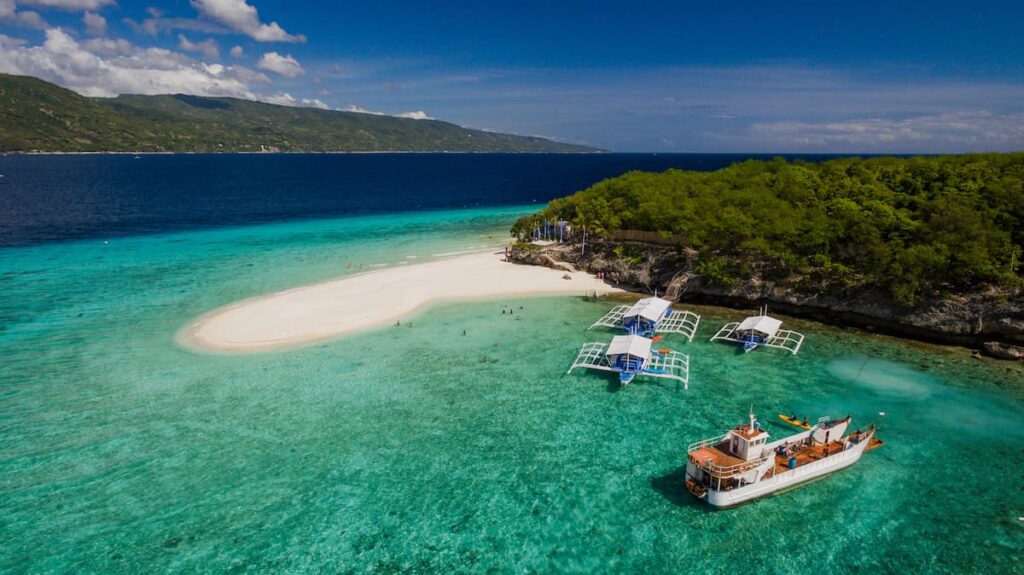Cebu, Philippines travel tips
Category
Categories
Popular Articles

Cebu is a lush island province in the heart of the Philippines, known for its rich history, vibrant culture, and tropical splendor. Revered as the oldest city in the Philippines, it’s famous for being the birthplace of Christianity in the Far East, known for landmarks like the Basilica Minore del Santo Niño. Cebu is also loved for its pristine white sandy beaches, stunning turquoise waters, and the extraordinary marine life of its numerous dive sites. The diversity in Cebu, from its urban pulse in Cebu City to the tranquility of its rural areas, makes it an irresistible destination for travelers.
Best Time to Visit:
The best time to visit Cebu is during the dry season, from November to May, when the sea is calm for beach and outdoor activities. The coolest months, January and February, are great for exploring. For a vibrant cultural experience, Sinulog Festival takes place in January, featuring grand parades, street parties, and traditional performances. However, being off-peak, visiting during the wet season (June to October) also has perks like fewer tourists and lower accommodation rates.
Climate & What to Pack:
Cebu has a tropical maritime climate. It’s typically hot and humid throughout the year, with average temperatures ranging from 24 to 34 degrees Celsius. Pack your summer-friendly clothes – shorts, t-shirts, sundresses, flip-flops, and don’t forget your bathing suit. Bring a lightweight rain jacket even in the dry season as tropical rains can be unpredictable. Also, a good pair of shoes for excursions and a sturdy reusable water bottle are vital.
Getting There:
The nearest major airport is the Mactan-Cebu International Airport (CEB), which connects Cebu to several international and domestic locations. From the airport, taxis, Grab (local version of Uber), and shuttles are common options to reach your accommodation. Travelers from most countries can enter the Philippines without a visa for stays not exceeding 30 days.
Getting Around Locally:
Cebu offers various local transportation options. Jeepneys and tricycles are the cheapest method. Taxis and Grab cars are widely available for more comfort. Cebu City is generally walker-friendly. You can also rent a car or scooter, though be aware of the local traffic conditions.
Safety Tips:
Cebu is generally a safe place for travelers, but like any major tourist destination, there are things to keep in mind. Stay vigilant in crowded places as pickpocketing can occur. Be aware of taxi scams where drivers don’t run the meter. Always respect the local culture and dress modestly, especially when visiting religious sites.
Top Things to Do & See:
Highlights in Cebu include visiting historical spots such as Magellan’s Cross, Basilica Menore del Santo Niño, and Fort San Pedro. Explore natural wonders like the stunning Kawasan Falls and diving spots like Moalboal. Don’t miss out on swimming with whale sharks in Oslob. The vibrant streets and markets of Cebu City are filled with local life and good for strolling.
Where to Stay:
Cebu offers a range of accommodations. Luxury travelers can opt for posh resorts such as Shangri-La’s Mactan Resort and Spa. Mid-range options include bai Hotel Cebu, while budget travelers can find many affordable hostels and guesthouses. Popular areas to stay include Cebu City for urban vibes, Mactan for beach resorts, and Moalboal for diving enthusiasts.
Food & Local Cuisine:
Cebuano cuisine is a delightful fusion of Spanish, Chinese, and native flavors. Try local specialties such as Lechon (roasted pig), Puso (hanging rice), and Su-tu-kil (a seafood dish). Always remember to eat with a spoon and fork, customary in the Philippines. From street food stalls to high-end restaurants, Cebu offers a range of dining options.
Cultural & Practical Tips:
The local currency is the Philippine peso. English is widely spoken. Tipping is appreciated but not mandatory. The Philippines uses type A, B, and C plugs with a standard voltage of 220V. Free Wi-Fi is available in many public areas, malls, and accommodations. Don’t be surprised by the local’s extraordinary friendliness and hospitality.
Sustainable or Responsible Travel Tips:
Respect the environment by refraining from littering, especially at beaches and natural sites. Opt for eco-friendly accommodations and tour groups. When swimming with whale sharks in Oslob, ensure your tour operator follows the guidelines for ethical interaction.
Finally, my personal travel tip for first-time visitors: Embrace the local way of life. Try local food, learn a few Cebuano phrases, and most importantly, engage with the locals. They are some of the friendliest people you’ll meet and often prove to be the best part of the trip. Smile, enjoy, and let Cebu surprise you!










